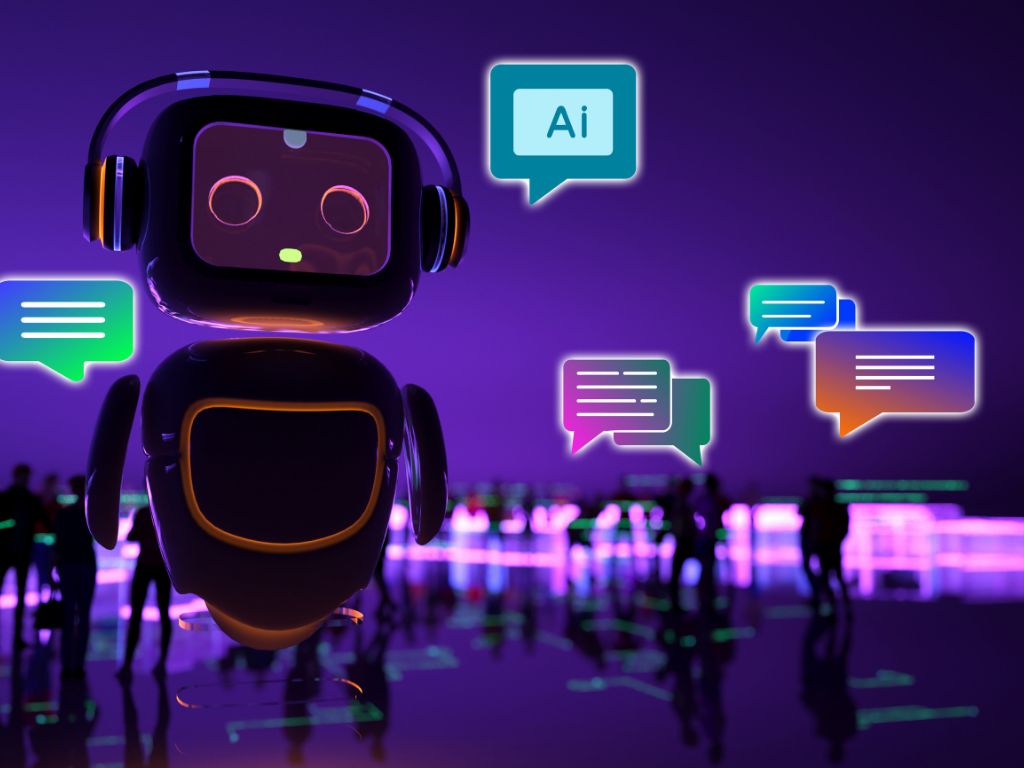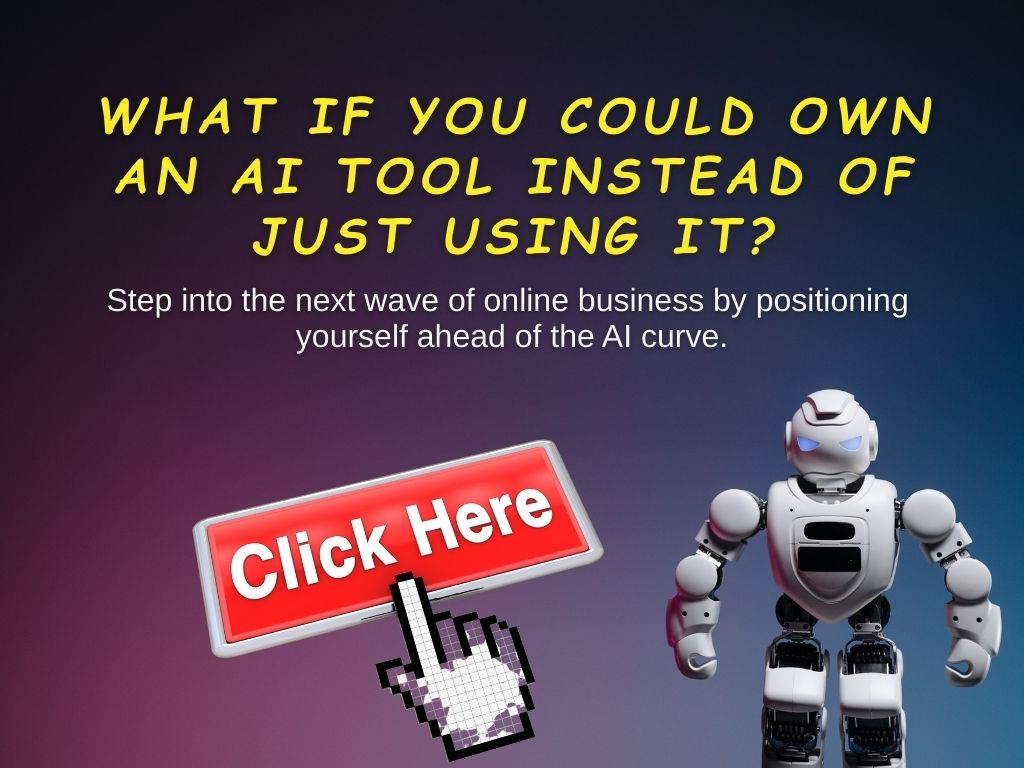AI Content Writing: Scale Faster Without Sacrificing Quality
Are you struggling to meet growing content demands while maintaining quality and creativity? This post reveals how AI content writing isn’t just a trend, but your essential ‘secret weapon’ for transforming your content strategy.
Discover how to effortlessly generate high-performing, engaging content at an unprecedented pace, giving you a powerful competitive edge in today’s fast-paced digital landscape.
The Content Creator’s Dilemma: Quality vs. Quantity
Every content creator, marketer, and business owner faces the same fundamental challenge: how do you consistently produce enough content to stay relevant, capture attention, and rank in search engines, while simultaneously ensuring that every piece is high-quality, valuable, and truly engaging?
It’s a classic tug-of-war. On one side, there’s Quality. This means well-researched, original, insightful, and perfectly polished pieces that resonate deeply with your audience. It’s the content that builds trust, establishes authority, and drives real results. But creating this level of quality is a slow, meticulous process. It demands time for ideation, research, writing, editing, SEO optimization, and promotion. Each piece is a significant investment.
On the other side stands Quantity. The digital landscape is hungry, constantly demanding fresh content to feed algorithms, maintain visibility, and keep your audience coming back. More content often means more opportunities for organic reach, more keywords to target, and a stronger presence across various platforms. The pressure to publish frequently can feel relentless – daily blog posts, multiple social media updates, regular newsletters, new landing pages… the list never ends.
The dilemma arises because, traditionally, these two forces pull in opposite directions. Pursue ultimate quality, and your output slows to a trickle. Prioritize sheer volume, and you risk sacrificing depth, accuracy, and originality, potentially damaging your brand’s reputation.
Most teams find themselves caught in the middle, constantly compromising, stretching resources thin, and often feeling like they’re falling short on both counts. What if you didn’t have to make that agonizing choice?

How AI Content Writing Changes the Game
Enter AI content writing, the game-changer that shatters the old paradigm. It’s not about choosing between quality and quantity anymore; it’s about achieving both, simultaneously. AI acts as an incredibly powerful co-pilot, supercharging your content creation process from start to finish.
Boosting Quality: AI tools can dive deep into research, analyze competitor content, and identify trending topics and keywords with unparalleled speed. They can generate comprehensive outlines, suggest compelling headlines, and even craft initial drafts that are grammatically sound and SEO-optimized from the get-go.
This means less time spent on foundational work and more time for human writers to inject their unique insights, refine the narrative, and add that irreplaceable human touch that truly resonates. AI helps ensure consistency in tone, checks for plagiarism, and even improves readability, elevating the overall quality of every single piece.
Unlocking Scalability: This is where AI truly shines for quantity. Imagine generating multiple variations of a blog post for different social media platforms in minutes, or transforming a long-form article into a series of email snippets. AI eliminates writer’s block by always providing a starting point. It automates repetitive tasks like rephrasing sentences, expanding paragraphs, or summarizing lengthy texts.
This unprecedented efficiency means you can produce a consistent stream of high-quality content across all your channels, without sacrificing depth or accuracy. You can respond to market demands faster, target more keywords, and maintain a vibrant, active online presence that keeps your audience engaged and algorithms happy.
AI isn’t here to replace human creativity; it’s here to amplify it. It frees up your valuable time and mental energy from the mundane, allowing you to focus on strategic thinking, deep analysis, and infusing your brand’s unique voice. It transforms content creation from a bottleneck into a seamless, high-volume operation, making it your ultimate secret weapon for dominating the digital space.

Achieving High-Quality Content with AI
Gone are the days when “AI-generated” immediately brought to mind robotic, uninspired prose. Today’s advanced AI content writing tools are incredibly sophisticated, acting not just as word generators, but as intelligent assistants that profoundly elevate the quality of your output.
Here’s how AI becomes your ally in crafting truly high-quality content:
- Data-Driven Research & Insights: AI can rapidly sift through vast amounts of data – competitor content, trending topics, search queries, and academic papers – to provide a robust foundation for your content. It can identify key themes, uncover audience pain points, and suggest unique angles you might have missed. This means your content starts with a well-researched, authoritative base, ensuring relevance and depth.
- Superior Structure and Cohesion: Struggling with outlines or logical flow? AI can generate comprehensive, well-structured outlines that ensure your content covers all necessary points in a logical sequence. It helps maintain narrative consistency, ensuring smooth transitions between paragraphs and sections, leading to a more coherent and enjoyable reading experience.
- Enhanced Readability and Grammar: AI writing tools are meticulous editors. They can instantly identify and correct grammatical errors, spelling mistakes, awkward phrasing, and even suggest improvements for sentence structure and conciseness. This polish ensures your content is professional, easy to understand, and free from distractions, elevating its perceived quality.
- Optimized for Search Engines (SEO): High-quality content isn’t just about good writing; it’s about being discovered. AI can analyze keywords, identify LSI (Latent Semantic Indexing) terms, and help you naturally integrate them throughout your text. It can also assist in crafting compelling meta descriptions and titles that improve click-through rates, ensuring your valuable content reaches its intended audience.
- Maintaining Brand Voice and Tone: Consistency is key to brand identity. AI can be trained on your existing content and brand guidelines to help maintain a consistent voice and tone across all your publications. Whether you need a formal, playful, or empathetic tone, AI can help ensure every piece aligns with your brand’s personality, building trust and recognition.
- Freeing Human Creativity for the “Magic”: Perhaps the most significant contribution to quality is AI’s ability to automate the mundane. By handling initial drafts, research summaries, and basic editing, AI frees up human writers to focus on what they do best: injecting unique insights, compelling storytelling, emotional resonance, and the distinct human touch that truly captivates an audience. This allows you to spend less time on mechanics and more time on strategy, creativity, and refining the narrative to perfection.
AI empowers you to build a strong, intelligent foundation for every piece of content, and then provides the tools to polish, optimize, and elevate it, ensuring that “high-quality” isn’t just an aspiration, but a consistent reality.

Scaling Your Content Production Effortlessly
The digital landscape is an insatiable beast, constantly demanding fresh, engaging content to feed algorithms, capture attention, and drive conversions. Traditionally, meeting this demand meant stretching resources thin, sacrificing quality, or simply falling behind. But with AI content writing, the concept of content scarcity becomes a relic of the past.
AI is your ultimate accelerator, transforming your content pipeline from a trickle to a torrent. No longer will you be held back by writer’s block or the sheer volume of tasks. AI can generate comprehensive initial drafts, outlines, and summaries in mere moments, providing a robust starting point that eliminates the dreaded blank page syndrome. This means your team spends less time on foundational writing and more time on refining, strategizing, and adding the unique human insights that truly differentiate your brand.
Think about the possibilities for content repurposing: a single long-form article can be instantly transformed into a series of punchy social media posts, engaging email snippets, or even a script for a short video. AI automates these repetitive, time-consuming tasks, allowing you to maximize the reach and value of every piece of content you create. Need multiple variations of an ad copy or product description? AI delivers them in seconds.
This unprecedented efficiency translates directly into a massive boost in output. You can publish more frequently, target a wider array of keywords, and maintain a vibrant, active presence across all your digital channels. Respond to market trends with lightning speed, launch new campaigns without delay, and consistently feed your audience with valuable information.
AI ensures you can maintain a relentless publishing schedule, keeping your audience engaged, algorithms happy, and your brand at the forefront of your industry. It’s not just about writing more; it’s about doing so strategically and effortlessly, allowing you to truly dominate your digital space.

Practical Applications: What AI Can Write For You
AI content writing isn’t just a theoretical concept; it’s a practical, hands-on tool that can revolutionize nearly every aspect of your content pipeline. From initial ideation to final polish, here’s a glimpse into the diverse range of content types AI can help you create and optimize:
- Blog Posts & Articles: Struggling with writer’s block or need to scale your blog’s output? AI can generate comprehensive outlines, research-backed initial drafts, compelling introductions, and engaging conclusions. It can even help you expand on specific sections, ensuring a steady stream of fresh, informative articles for your audience.
- Social Media Updates: Crafting unique posts for every platform can be time-consuming. AI can quickly generate engaging captions, tweets, Facebook updates, LinkedIn posts, and even Instagram descriptions, tailored to different tones and character limits. It’s perfect for quickly creating variations for A/B testing or maintaining a consistent presence.
- Website Copy (Landing Pages, Product Descriptions, About Us): Need persuasive copy that converts? AI can help write compelling headlines, benefit-driven product descriptions, service pages, and even your brand story for an “About Us” section. It ensures clarity, conciseness, and persuasive language designed to resonate with visitors.
- Email Marketing Campaigns: From welcome sequences to promotional newsletters and follow-up emails, AI can draft engaging subject lines, body copy, and calls to action. It helps maintain a consistent voice and can even generate different versions for audience segmentation.
- Ad Copy & Marketing Collateral: Crafting short, impactful ad copy for Google Ads, social media ads, or banner ads is crucial. AI excels at generating multiple variations of headlines and body text, allowing you to quickly test and optimize your campaigns for maximum ROI.
- SEO Elements (Meta Descriptions, Titles, Keyword Integration): Beyond just writing content, AI can optimize it for search engines. It can generate compelling meta descriptions and SEO titles that improve click-through rates, and intelligently suggest where and how to naturally integrate target keywords and LSI terms throughout your content.
- Video Scripts & Podcast Outlines: Expanding your content into new formats? AI can help outline video scripts, generate talking points for podcasts, or even draft short explainer video narratives, ensuring your message is clear and engaging across multimedia channels.
- Content Repurposing & Summarization: Maximize your content’s reach by transforming it. AI can take a long-form article and instantly condense it into a social media thread, an email snippet, a bulleted list for an infographic, or a concise executive summary, saving hours of manual effort.
- FAQs & Customer Support Content: AI can quickly generate answers to common questions, draft helpful knowledge base articles, or even create chatbot responses, improving your customer service efficiency and consistency.
By leveraging AI across these diverse applications, you’re not just writing more; you’re writing smarter, faster, and with a level of consistency and quality that was previously unattainable.

Overcoming Challenges: The Art of AI-Human Collaboration
While AI content writing offers incredible advantages, it’s crucial to address common concerns and understand that its true power lies not in replacing human effort, but in enhancing it. The most successful content strategies using AI embrace a collaborative model, recognizing that AI is a sophisticated tool, not a standalone solution.
The challenges often cited with purely AI-generated content include a lack of genuine originality, a tendency towards generic phrasing, potential for factual inaccuracies (often termed “hallucinations”), and an absence of true human empathy or nuanced understanding. These are valid points, and they underscore why the “human in the loop” remains indispensable.
This is where the art of AI-human collaboration comes into play. Think of AI as an exceptionally efficient, tireless research assistant, first drafter, and meticulous editor. Your role as the human content creator evolves from being the sole workhorse to becoming the strategic director, the insightful editor, and the ultimate arbiter of quality and voice.
Here’s how this powerful partnership truly elevates your content:
- Strategic Direction & Prompt Engineering: AI needs clear guidance. Humans define the content strategy, set the objectives, identify the target audience, and craft precise prompts that guide the AI towards the desired output. Your ability to articulate your vision to the AI is paramount.
- Fact-Checking & Accuracy Assurance: AI models learn from vast datasets, but they don’t “understand” in the human sense. They can sometimes generate plausible-sounding but incorrect information. Human oversight is essential for rigorous fact-checking, ensuring all data, statistics, and claims are accurate and reliable.
- Injecting Unique Insights & Originality: AI excels at synthesizing existing information. Humans excel at generating truly novel ideas, offering unique perspectives, sharing personal anecdotes, and connecting disparate concepts in innovative ways. Your unique experiences and expertise are what differentiate your content from the vast sea of information.
- Adding Nuance, Emotion, and Brand Voice: AI can mimic tones, but it struggles with genuine emotional resonance, subtle humor, sarcasm, or deeply empathetic language. Humans infuse the content with the authentic voice of the brand, ensuring it speaks directly to the audience’s emotions and builds genuine connections. This is where the “magic” happens – the storytelling, the compelling narrative, the unforgettable turn of phrase.
- Refinement, Polishing, and Flow: While AI can produce grammatically correct drafts, human writers are masters of rhythm, flow, and narrative cohesion. They can rearrange sentences for maximum impact, refine word choices for clarity and elegance, and ensure the content truly sings. This meticulous polishing transforms a good draft into an exceptional piece.
- Ethical Oversight & Bias Mitigation: AI models can inadvertently perpetuate biases present in their training data. Human content creators must critically review AI-generated content to ensure it is fair, inclusive, and aligns with ethical guidelines and brand values.
By embracing this collaborative model, you leverage AI for its unparalleled speed and efficiency in handling the foundational and repetitive tasks, freeing up your valuable time and creative energy. You then apply your uniquely human intelligence, creativity, and discernment to refine, personalize, and elevate the content, ensuring it is not just good, but truly exceptional, authentic, and impactful. This synergy is the secret to high-quality, scalable content in the age of AI.
Traditional vs. AI-Assisted Content Writing
| Step in Content Creation | Traditional Writing | AI-Assisted Writing | Benefit to You |
|---|---|---|---|
| Research & Topic Discovery | Manual keyword research, competitor analysis, reading articles (hours of work). | AI scans trends, keywords, and competitors in minutes. | Saves time, ensures data-driven topics. |
| Outlining & Structure | Built manually, risk of gaps or poor flow. | AI generates structured outlines instantly. | Faster start, more comprehensive coverage. |
| Drafting | Blank-page struggle, writer’s block, slow first draft. | AI generates initial draft with SEO and grammar baked in. | Eliminates writer’s block, accelerates output. |
| Editing & Optimization | Manual proofreading, SEO integration, readability checks. | AI corrects grammar, suggests keywords, improves clarity. | Higher quality with less effort. |
| Repurposing Content | Manual rewrites for blogs, social posts, emails. | AI instantly adapts long content into multiple formats. | Scales reach across channels. |
Choosing Your AI Secret Weapon: Key Considerations
With the explosion of AI tools, the market is flooded with options, each promising to be your ultimate content creation partner. But just like choosing the right brush for a masterpiece, selecting the AI content writing tool that truly aligns with your specific needs, workflow, and budget is crucial. This isn’t a one-size-fits-all scenario; the ‘best’ tool is the one that empowers you to achieve your unique content goals.
Here are the key considerations to guide your decision:
- Your Core Content Needs & Use Cases: Before diving into features, ask yourself: What kind of content do you produce most frequently? Are you primarily looking for help with long-form blog posts, quick social media updates, persuasive ad copy, or SEO optimization? Some tools excel in specific niches (e.g., short-form marketing copy), while others offer a broader range of functionalities. Define your primary use cases to narrow down your options.
- Feature Set & Capabilities: Beyond basic text generation, what advanced features do you need?
- Content Types Supported: Does it handle everything from comprehensive blog outlines to video scripts and email sequences?
- SEO Integration: Does it offer keyword research assistance, LSI term suggestions, meta description generation, or content optimization scores?
- Tone & Voice Control: Can you guide the AI to match your brand’s specific voice (e.g., formal, casual, empathetic, authoritative) and maintain consistency?
- Plagiarism & Originality Checks: Does it help ensure your content is unique and free from accidental plagiarism?
- Readability Scores & Grammar Checks: Does it offer built-in editing assistance to improve clarity, conciseness, and correctness?
- Integrations: Can it connect seamlessly with your Content Management System (CMS), project management tools, or other marketing software to streamline your workflow?
- Ease of Use & User Experience (UX): Even the most powerful AI tool is useless if it’s too complex to navigate. Look for an intuitive interface, clear instructions, and a smooth workflow. A good user experience means less time learning the tool and more time creating content. Many tools offer free trials – take advantage of them to test the waters and see how it fits your team’s comfort level.
- Output Quality & Customization: This is paramount. Does the AI generate content that sounds natural, coherent, and insightful, or does it feel generic and robotic? Pay attention to how much effort is required to edit and refine the AI’s output. Can you easily provide feedback and guide the AI to produce better results over time? Some tools offer more granular control over parameters, allowing for more tailored and high-quality outputs with less human intervention needed for refinement.
- Pricing Model & Scalability: AI tools come with various pricing structures: subscription tiers, credit-based systems, or usage-based billing. Consider your current and projected content volume. Does the pricing model align with your budget and allow for future growth without becoming prohibitively expensive? Look for transparent pricing and understand exactly what you’re paying for in terms of features and usage limits.
- Support, Resources & Community: What kind of support does the provider offer? Are there extensive knowledge bases, tutorials, responsive customer service, or an active user community where you can find tips and solutions? Having access to robust resources can significantly impact your ability to leverage the tool effectively and troubleshoot any issues that arise.
- Ethical Considerations & Data Privacy: As AI becomes more integrated into your operations, understanding how a tool handles your data and its ethical guidelines is important. Does the provider have clear policies on data privacy and security? Are they transparent about their AI models and potential biases in the generated content? Choose a provider that aligns with your ethical standards and ensures the responsible use of AI.
Ultimately, the best AI secret weapon for your content strategy isn’t necessarily the most expensive or feature-rich one. It’s the one that seamlessly integrates into your existing workflow, consistently delivers high-quality drafts, and empowers your human team to focus on strategic thinking and creative refinement. Don’t be afraid to experiment with free trials and demos to find your perfect match.

The Future Is Now: Embracing AI in Your Content Strategy
The whispers of AI revolutionizing content creation have grown into a roaring truth. The future isn’t a distant horizon; it’s here, now, powering the most effective and efficient content strategies across industries. The question is no longer if AI will play a role in your content pipeline, but how quickly and effectively you embrace it to gain a definitive competitive edge.
In a digital landscape where content saturation is the norm and audience attention is a precious commodity, standing still is tantamount to falling behind. Businesses and creators who leverage AI are already outmaneuvering their competitors, producing more high-quality, relevant, and engaging content at speeds previously unimaginable. They are dominating search rankings, capturing more leads, and building stronger connections with their audiences.
Embracing AI isn’t about a minor tweak to your workflow; it’s about a fundamental shift in how you conceive, produce, and scale your content efforts. It transforms your content team from a group constantly fighting bottlenecks and burnout into a highly strategic, agile, and prolific powerhouse. By offloading the repetitive, time-consuming tasks to AI, your human talent is freed to focus on what truly differentiates your brand:
- Deep strategic thinking: Identifying market gaps, crafting innovative campaigns.
- Unrivaled creativity: Injecting unique perspectives, compelling narratives, and emotional depth.
- Authentic human connection: Building trust, fostering community, and expressing your brand’s true personality.
- Meticulous refinement: Polishing AI-generated drafts into masterpieces of clarity and impact.
The choice is clear: continue to grapple with the age-old quality vs. quantity dilemma, or empower your team with the tools to achieve both simultaneously. AI content writing is not just an efficiency hack; it’s a strategic imperative for anyone serious about thriving in the modern digital ecosystem.
Start experimenting, integrate intelligently, and watch as your content strategy transforms from a challenge into your most formidable secret weapon. The future of content is collaborative, innovative, and incredibly exciting and it begins today.

Frequently Asked Questions (FAQs)
Will AI content writing replace human content writers?
Absolutely not! Think of AI as your incredibly powerful co-pilot, not a replacement. AI excels at automating repetitive tasks, generating initial drafts, conducting rapid research, and optimizing for SEO. This frees up human writers and strategists to focus on what they do best: injecting unique insights, crafting compelling narratives, adding emotional depth, ensuring factual accuracy, and infusing the irreplaceable human touch that truly resonates with an audience. The most successful content strategies leverage AI to amplify human creativity, not diminish it.
How accurate and original is AI-generated content?
AI models learn from vast amounts of data, making them proficient at synthesizing information. However, they can sometimes “hallucinate” or present plausible-sounding but inaccurate information. Therefore, human fact-checking and critical review are absolutely essential to ensure accuracy. Regarding originality, AI strives to generate unique text, but its output can sometimes lean towards generic phrasing. The human element is crucial for adding truly novel ideas, unique perspectives, and ensuring the content is distinct and free from accidental plagiarism. Always use a plagiarism checker as part of your final review process.
What kinds of content can AI help me create?
The applications are incredibly diverse! AI can assist with nearly every content type, including:
- Long-form content: Blog posts, articles, whitepapers, and e-books.
- Short-form marketing copy: Social media updates, ad copy, email subject lines, and product descriptions.
- Website content: Landing page copy, About Us sections, and FAQs.
- SEO elements: Meta descriptions, SEO titles, and keyword integration.
- Multimedia scripts: Video outlines and podcast talking points.
- Content repurposing: Transforming existing content into new formats (e.g., an article into social media snippets).
How do I ensure my AI-generated content aligns with my brand voice?
This is where “prompt engineering” and human oversight shine. You can train AI tools on your existing brand guidelines and content to help it learn your specific tone, style, and vocabulary. By providing clear, detailed prompts, you guide the AI towards the desired output. Ultimately, the human touch is paramount for refining the AI’s draft, ensuring it perfectly captures your brand’s unique personality, emotional resonance, and subtle nuances that build genuine connection with your audience.
Is AI content detectable by search engines or plagiarism checkers?
Search engines like Google prioritize high-quality, valuable, and relevant content that provides a great user experience, regardless of how it was created. Their algorithms are designed to understand content, not necessarily to detect if it was AI-generated. The key is to use AI to enhance quality, not to churn out low-effort, thin content.
Regarding plagiarism checkers, these tools identify similarities to existing published text. If AI generates content that closely mirrors existing sources without proper attribution, it could be flagged. This is why thorough human review, fact-checking, and the addition of unique insights are crucial to ensure your AI-assisted content is original and passes plagiarism checks.
How should I get started with AI content writing?
Start by identifying your biggest content bottlenecks. Are you struggling with ideation, initial drafts, or repurposing? Then, explore the market for AI tools that offer free trials or demos. Experiment with a few, focusing on ease of use, output quality, and how well they integrate into your existing workflow. Begin with smaller, less critical tasks to build confidence and learn how to craft effective prompts. Remember, the goal is always a collaborative approach, where AI handles the heavy lifting, and you provide the strategic direction, creative flair, and final polish.
Leave a Reply